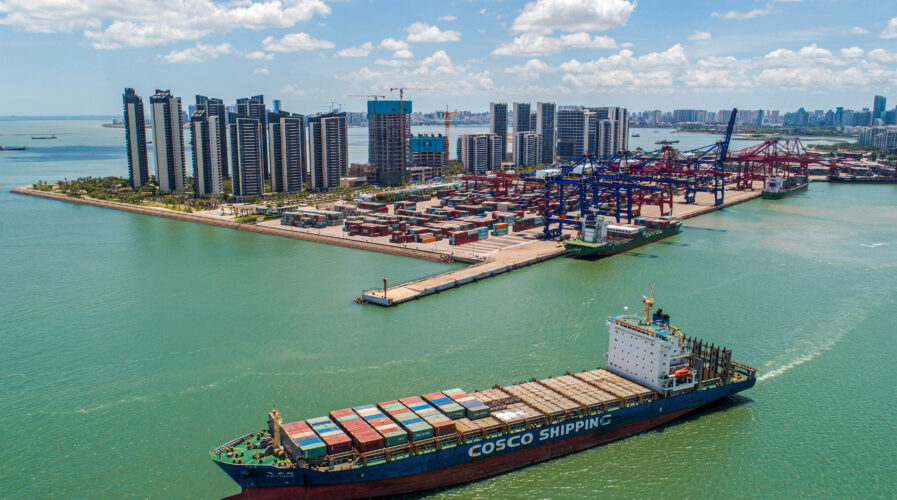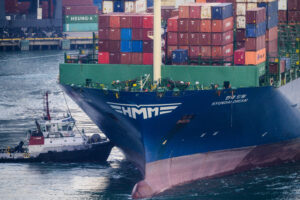
Is the upcoming Lunar New Year holidays straining the already-fragile supply chains? (Photo by AFP) / China OUT
Will the upcoming Lunar New Year strain the already-fragile supply chains?
It is widely known that Lunar New Year is China’s largest holiday — and also where major supply chains are affected by shipping firms shutting operations down.
What is lesser-known however, is that this time around, some of them will be suspending their services and operations even earlier than before.
This scenario could only mean one thing: chaos in the already-fragile supply chain.
For starters, the legal holiday in China is seven days long starting from the eve of the Lunar New Year (otherwise known as Spring Festival Eve).
This will extend to the sixth day of the first lunar month. So for this year, the official Chinese public holiday is likely to start on January 31, and end on February 6, 2022. Interestingly, the Winter Olympic Games in Beijing will commence on Feb 4, 2022.
Just like Western holidays, Chinese New Year (CNY) shipping delays are pretty common since it can be an incredibly chaotic period. The impact of this holiday is global, and most online retailers would expect to be affected even a few weeks after the holiday.
What makes this celebration different from the rest of the world is how it triggers the “world’s largest human migration,” with over 500 million workers traveling across the country to visit their hometowns.
For starters, here’s how the CNY holidays affect businesses
Undeniably, China has become a powerhouse in product development and manufacturing over the last few years. Today, China is easily known as the world’s factory because of the sheer number of manufacturing operations in its territories.
The supply chain during the period has historically been chaotic. Most factory operations are halted to allow workers to celebrate the holiday and a stoppage at this stage alone would inevitably affect the overall supply chain.
The majority of retailers would try to be proactive in preparing for the holiday to entirely prevent CNY shipping delays. There are in fact a variety of strategies adopted by retailers, but the most common is how more inventory is produced to prevent items from selling out. While this is a good strategy, the increase in orders can lead to an overload of shipments right before the holiday.
With that comes shipment delays, and to make matters worse this time, the country that is home to about a third of global manufacturing, recently imposed sweeping lockdowns in an attempt to keep the Omicron variant at bay.
China’s zero-tolerance policy
Having largely kept the Covid-19 cases at bay since 2020, China has been hit by a wave of cases since the start of this year. By the second week of January, at least 20 million people in three cities were under full lockdown, with many more subjected to partial lockdowns and mass testing.
Overall, over the last few weeks, at least 30 major Chinese cities have reported locally transmitted Covid cases. Although no deaths, many cases have involved the highly transmissible Omicron variant, and experts reckon, it makes it harder for the government’s dogged pursuit of “zero Covid” to be achieved.
To recall, two years ago during the initial emergence of Covid-19 in Wuhan, China used lockdowns, contact tracing, and quarantines to halt the spread of the virus.
Those tactics, which are being repeated now, have been highly effective. However, it is the extreme transmissibility of the Omicron variant that is proving to be the biggest test yet of China’s system.
Which companies have stalled their supply chains in China?
A report by the Wall Street Journal stated that Toyota’s operations had come to a halt at its factory in Tianjin after the city imposed mandatory testing after detecting two cases of the omicron variant.
Volkswagen also closed a plant there on top of another in the port city of Ningbo, the Journal reported.
Separately, a supplier for Nike, Adidas, and Uniqlo, Shenzhou International, said in a disclosure to the stock exchange that it had to suspend operations at several production sites in Ningbo from January 3.
Even Samsung, which has a memory chip factory in Xi’an, a city that has been under a strict lockdown since December 23, was forced to “adjust operations,” as workers were unable to go to work due to Covid restrictions.
When issues in supply chains meet zero-tolerance policies

A worker (C) stands at the bow of the Hyundai Dream container ship at the Kwai Tsing Container Terminals in Hong Kong on May 12, 2021. (Photo by Anthony WALLACE / AFP)
From the manufacturing perspective, China’s zero-tolerance policy has manufacturers jittery about the possibility of another round of shutdowns for Chinese factories and ports — and that too, around the period of their local holidays.
As it is, manufacturers are on edge for spending the past two years dealing with crippling supply chain woes — and things seem to be only getting worse so far this year.
To date, lockdowns on Chinese factory production and deliveries have been limited. Four of China’s largest port cities — Shanghai, Dalian, Tianjin and Shenzhen — have imposed partial lockdowns to curb a surge in the case counts.
Yet, analysts told CNBC that any kind of lockdown, quarantine, or restriction, in general, have been causing a backlog in some of China’s major ports, resulting in “chaos”.
Worst yet, it has pushed up air freights by as much as 50% in some cases due to some shipping firms suspending their services, CNBC said, and it might get harder to obtain in the coming weeks.
According to Freightos, a Hong Kong-based freight booking platform, delivery rates from China to North Europe reached US$9.59 per kg in mid-January— up over 50% from below US$6 per kg at the start of January.
On the other hand, sea shipping spot rates crept up 4% on the Asia to US West Coast route, CNBC said, but quoting analysts, the news agency said rates will not likely go up much further.
Again, these setbacks come just as many companies had hoped they were about to see some easing of the bottlenecks that have clogged global supply chains since the pandemic began.
After all, it is the combination of intermittent shutdowns at factories, ports, and warehouses around the world as well consumers’ surging demand for foreign goods that has thrown a wrench in the global conveyor belt for goods this year.
READ MORE
- Ethical AI: The renewed importance of safeguarding data and customer privacy in Generative AI applications
- How Japan balances AI-driven opportunities with cybersecurity needs
- Deploying SASE: Benchmarking your approach
- Insurance everywhere all at once: the digital transformation of the APAC insurance industry
- Google parent Alphabet eyes HubSpot: A potential acquisition shaping the future of CRM


